Iceland volcano: Scientists reveal just how bad the eruption could get as bubbling lava and smoke are spewed into the sky at Reykjanes peninsula after weeks of activity
After months of seismic activity, a volcano erupted on Iceland's Reykjanes Peninsula last night.
At 22:17 local time, a swarm of earthquakes was followed by a volcanic eruption that created a 2.5-mile (4 km) fissure of boiling lava.
Experts have warned that massive lava flows could threaten the town and the nearby power station.
However, scientists say the town of Grindavik, located less than two miles south of the eruption, may avoid the worst of the damage.
But how bad could an eruption get? MailOnline spoke to experts to find out.
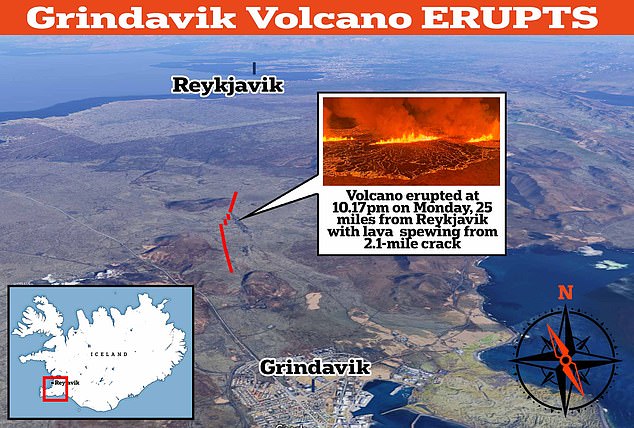
At 22:17 local time, a swarm of earthquakes was followed by a volcanic eruption that created a 2.5-mile-long (4 km) fissure of boiling lava.
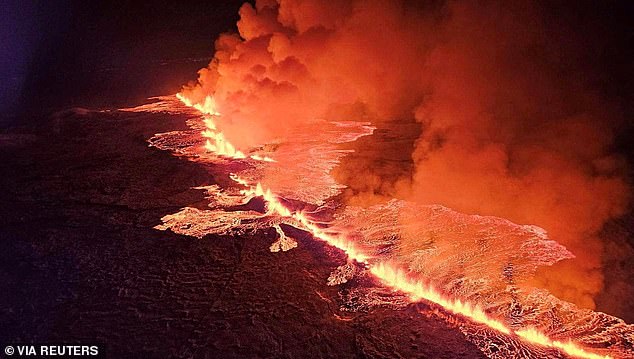
The eruption created a fissure 2.5 miles long, spewing hundreds of cubic meters of lava every second.
The Reykjanes Peninsula has been on high alert for weeks after experiencing increased seismic activity that began in late October.
Grindavik's 4,000 residents were evacuated in November, when strong seismic activity raised fears of an imminent eruption.
However, fears of an eruption began to ease by the end of this week.
The popular tourist destination Blue Lagoon reopened on Sunday despite being hit by 230 earthquakes overnight.
But yesterday's eruption threatens to destroy the city and its tourist attractions.
When it first erupted, the fissure extended about 2.2 miles (3.5 kilometers) and spewed out hundreds of cubic meters of lava every second.
The tremendous explosive force of the early explosion caused the fissure to extend southward to its present length of 2.5 miles (4 km).
While the eruption has now slowed, Lovisa Mjøl Guðmundsdóttir, a natural hazards specialist at the Icelandic Meteorological Office, said: mbl.is said The average flow is now 250 cubic meters per second.
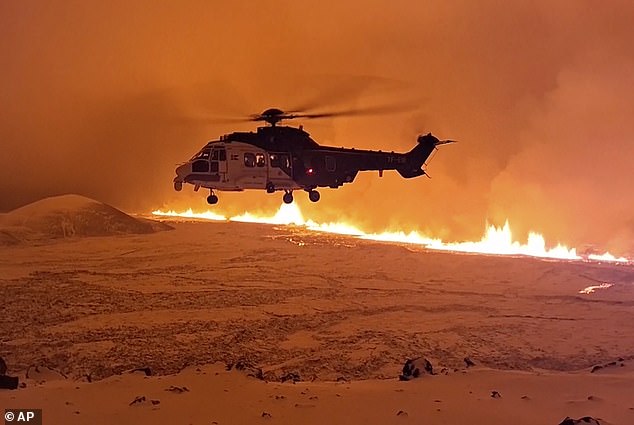
The lava flow from the fissure appears to have slowed but this is not an indication that the eruption will stop anytime soon.
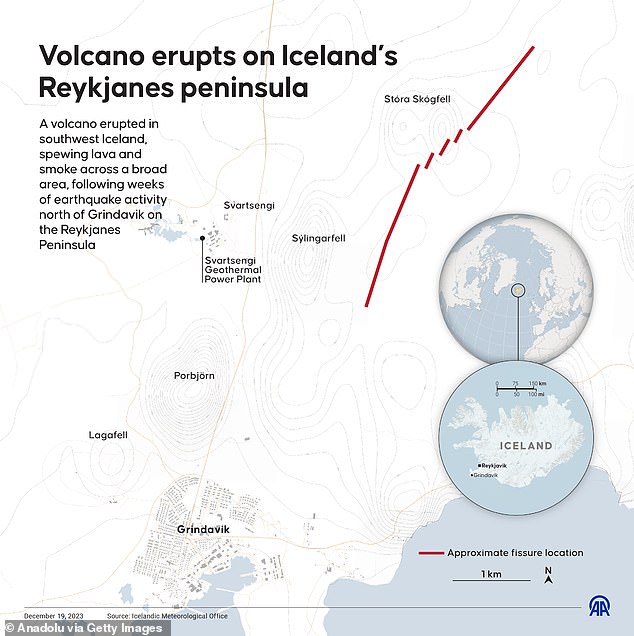
The greatest danger is that the fissure (shown as a red line) extends south and the lava begins to flow towards the city of Grindavik (bottom left) or the Svartsinji geothermal power station
The greatest danger is that the lava will start flowing south or west towards Grindavik or the Svartsinji geothermal power station.
However, Professor David Rothery of the Open University told MailOnline it may be too early to say where most of the lava will flow.
“This is what was expected several weeks ago near Grindavik, thanks to the use of multiple monitoring techniques. It appears to be a classic fissure eruption,” he explained.
“The eruption will likely be concentrated in a single vent within a few hours or days, and the future path of the eruption (including where the most lava spreads) will depend on where it occurs.”
However, there are some initially promising reports of scientific observations of the volcano.
Geophysicist Björn Odson says flights over the eruption reveal that the crater was “in the best place if an eruption had occurred there.”
“The eruption occurs north of the watershed (a point at which the lava is clearly flowing one way or another), so the lava is not flowing towards Grindavik.” Odsonne told Icelandic media.
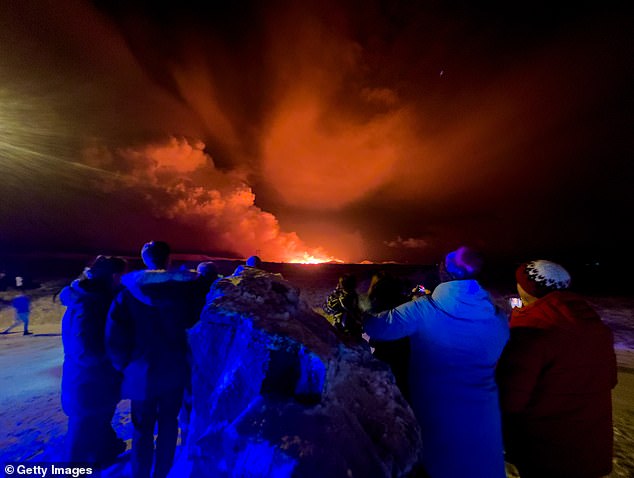
Residents of Grindavik are anxiously waiting to see if their city will survive the eruption, as the perpetual darkness of the Icelandic winter makes monitoring the progress of the lava difficult.
While Grindavik appears safe for now, there is still cause for concern as it is very difficult to assess how the eruption occurred.
Dr Sam Mitchell, a research associate in volcanology at the University of Bristol, said: “Although lava has not erupted in the town of Grindavik or at the nearby power station and popular tourist destination, the Blue Lagoon, lava flows are still limited.” A few kilometers away and there is still concern about lava reaching these key sites.
“One challenge for observing is that southwest Iceland is in a time of near-continuous darkness near the winter solstice.”
Dr Mitchell added: “Although the glow of lava is more noticeable during dark hours, it makes assessing larger areas of land and its impact a little more difficult.”
The biggest concern now is that the crack continues to grow southward.
If this happens, lava flows could pass through the watershed and begin flowing south towards Grindavik.
Although the eruption activity has now slowed, it is difficult to determine how long it will continue or how it will develop.
Estimates of the length of the eruption ranged from 10 days to several months.
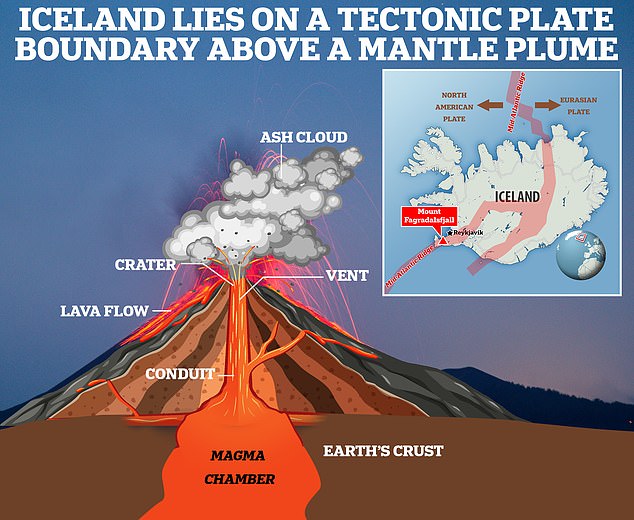
Iceland is a particular hotspot for seismic activity because it lies on the boundary of tectonic plates called the Mid-Atlantic Ridge.
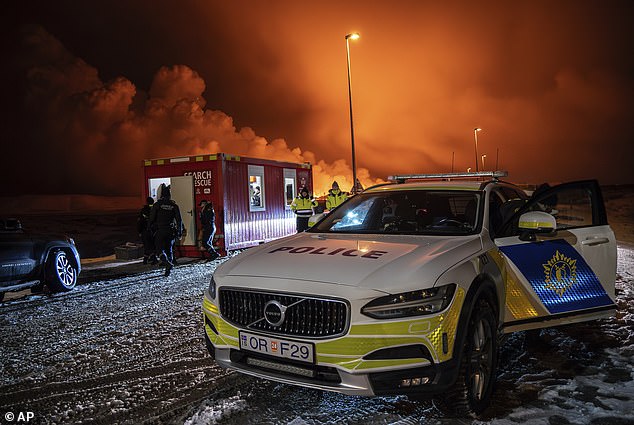
Authorities say no one has been injured so far, but the area remains closed to civilians
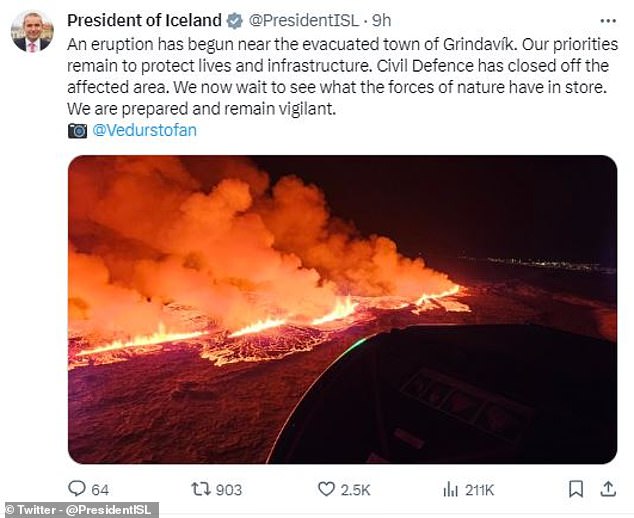
The President of Iceland says that the area is closed and that the authorities continue to monitor the situation as it develops
However, this eruption will almost certainly not cause any major disruption to air travel.
Unlike the 2010 eruption of Eyjafjallajökull, which grounded an estimated 50,000 flights, this eruption will not produce a cloud of ash and gas.
“Fissure eruptions do not usually lead to large explosions or significant production of ash dispersed into the stratosphere,” the Iceland Meteorological Office said.
In a post on X, formerly Twitter, Iceland's Foreign Minister Bjarne Benediktsson wrote: “There are no disruptions to flights to and from Iceland, and international flight corridors will remain open.”
The area surrounding the eruption site remains closed and a state of emergency has been declared by Civil Defense.
In a statement published on X, the President of Iceland wrote: “We now wait to see what the forces of nature have in store. We are prepared and remain vigilant.”
(Tags for translation) Daily Mail
